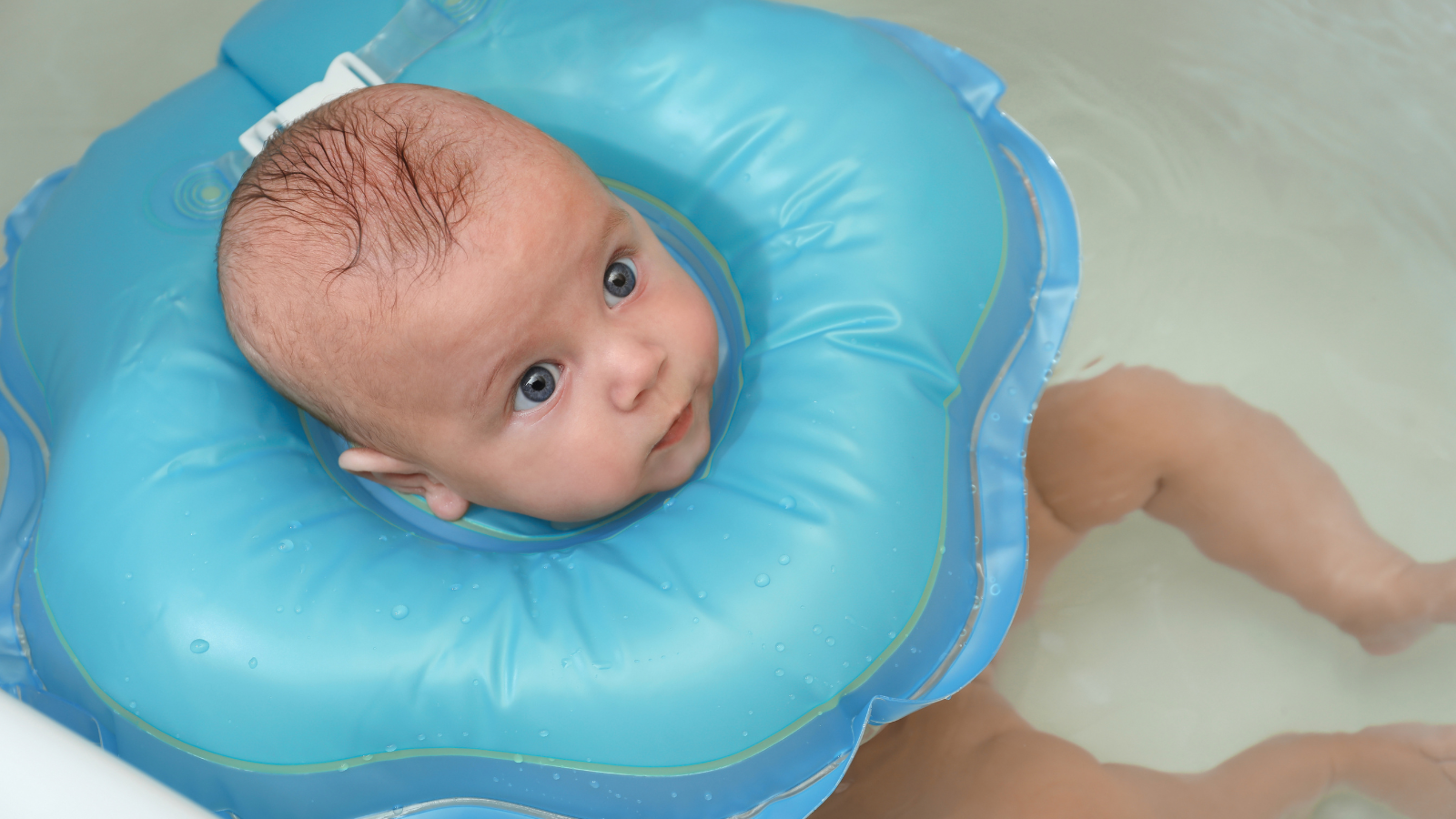FDA Issues Warning on Popular Baby Neck Float
Like anything inflatable, there is a potential for the float to spring a leak, deflate and put the infant at risk of drowning.
By Ashley Antle
The Food and Drug Administration (FDA) is warning parents, caregivers and health professionals about the dangers of inflatable neck floats after the death of one baby and the hospitalization of another. The flotation devices are especially dangerous for children with developmental disabilities such as spina bifida, spinal muscular atrophy (SMA) type 1, cerebral palsy and Down syndrome, according to the FDA.
The floats are much like an innertube but fit around a baby’s neck to keep their head above water while their body and limbs float freely. They have been used in bathtubs, swimming pools and water therapy sessions.
Like anything inflatable, there is a potential for the float to spring a leak, deflate and put the infant at risk of drowning. One popular infant neck float manufacturer issued a recall of its product in 2015 for this reason.
The FDA contends the floats may also cause injury from the strain on an infant’s neck, but this claim is disputed by at least one manufacturer. According to a statement on the manufacturer’s website, the company is working with the FDA to “help them properly evaluate the benefits and the risks of neck floats, specifically around the concerns of potential neck strain which have never been reported to us after millions of … sessions.”
Lydia Robey, a Cook Children’s physical therapist, shares the FDA’s concern about neck traction, or pull on the spine, that infant neck floats may put on small children and babies.
“Some developmental disabilities have a higher likelihood of bony neck anomalies that could be compromised, or a condition exacerbated if traction is placed on the neck,” Robey said.
Children with disabilities do benefit from water therapy, she said. They can move more freely and comfortably in the water thanks to the decrease in gravitational force on their muscles that buoyancy provides.
"I recommend that parents hold their child while they move in the water to be sure they are 100% focused on the child's safety," Robey said.
Sharon Evans, trauma injury prevention coordinator at Cook Children’s Medical Center, worries that if a baby is left unattended in the float and it overturns in the water, it would be difficult, if not impossible, for the baby to turn the float and themselves upright.
Infant neck floats are not approved flotation devices by the United States Coast Guard (USCG). The USCG establishes and oversees marine safety regulations, including the proper fit, function and use of personal flotation devices such as life jackets. Their stamp of approval means the personal flotation device meets certain criteria when put to the test in various water conditions.
“If they're not USCG-approved, then they don't have to pass any kind of USCG guideline or safety test to see if it will actually even keep your kid afloat,” Evans said.
Drowning is the No. 1 cause of death in children under the age of 4. In June, 19 children were treated for drownings at Cook Children’s Medical Center. While not all drownings result in death, they can cause severe brain damage.
Drownings are preventable. Wearing a USCG-approved life jacket is one way to be safe around water. Keeping your eyes on your child at all times while in or near the water, be it the bathtub, pool or lake, is critical even if they are wearing a life jacket or any flotation device. In both of the neck float cases that prompted the FDA warning, neither infant was being directly monitored by their caregiver, according to the FDA.
“I think parents just see floats like this and think it helps them in the water, and they put their baby in there and think they’re safe and it takes all the responsibility off,” Evans said. “But there is no replacement for an adult watching a child in the water and being within arm’s reach at all times.”
Lifeguard your Child began in 2016 and continues its regional collaboration, led by Cook Children’s, to prevent drownings in North Texas. The campaign aligns consistent messages and educational goals across our region. Together with community partners across 11 counties, we work year-round to provide education, Water Watcher tags, swim lessons, life jackets and other prevention tools to families.
For more information, visit: LifeguardYourChild.org
About Cook Children's
Cook Children’s Health Care System embraces an inspiring Promise – to improve the health of every child through the prevention and treatment of illness, disease and injury. Based in Fort Worth, Texas, we’re proud of our long and rich tradition of serving our community. Our not-for-profit organization is comprised of nine companies, including our Medical Center, Physician Network, Home Health company, Northeast Hospital, Pediatric Surgery Center, Health Plan, Health Services Inc., Child Study Center and Health Foundation. With more than 60 primary, specialty and urgent care locations throughout Texas, families can access our top-ranked specialty programs and network of services to meet the unique needs of their child. For 100 years, we’ve worked to improve the health of children from across our primary service area of Denton, Hood, Johnson, Parker, Tarrant and Wise counties. We combine the art of caring with leading technology and extraordinary collaboration to provide exceptional care for every child. This has earned Cook Children’s a strong, far-reaching reputation with patients traveling from around the country and the globe to receive life-saving pediatric care. For more information, visit cookchildrens.org.

